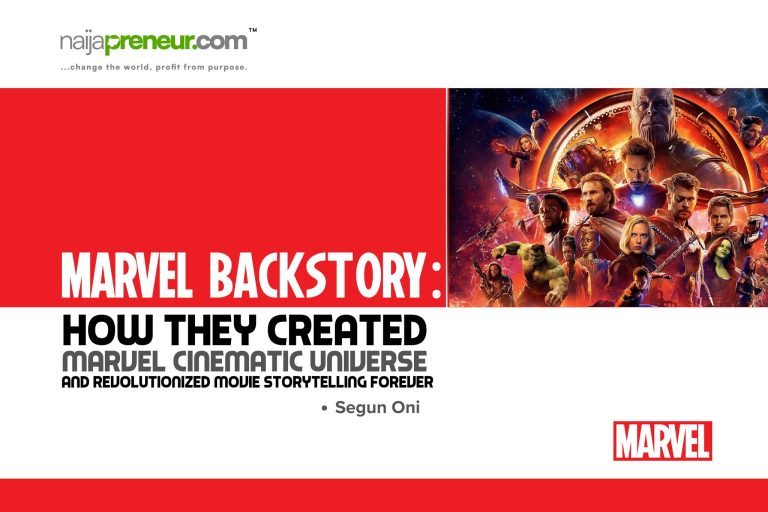In 1996, Marvel Comics was on the brink of collapse. Plummeting sales, the departure of top talent, and crippling debt left the company in tatters. Yet, one bold gamble turned everything around and paved the way for the Marvel Cinematic Universe (MCU)—a multi-billion dollar empire. Here’s how Marvel went from bankruptcy to blockbuster success.
Marvel’s Glory Days (Early 90s)
In the early 1990s, Marvel was on top of the comic world:
- X-Men #1 became the best-selling comic of all time, with 8 million copies sold.
- Spider-Man was a cultural phenomenon, and collectors were snapping up comic books like never before.
But this golden era was short-lived.
The Collapse: The Comic Book Bubble Bursts
The comic book market crashed as collectors realized their “investments” were worthless, leading to:
- Plummeting sales and stock prices: Marvel’s stock plummeted from $35.75 to just $2.375.
- Bankruptcy: Marvel was hemorrhaging money, and the company needed to make drastic moves to survive.
The Desperate Decision: Selling Their Assets
In an effort to stay afloat, Marvel made a devastating move:
- They sold off their most valuable assets to movie studios.
- Spider-Man was sold to Sony for just $7 million.
- X-Men was licensed to Fox.
- The Hulk was licensed to Universal.
While these deals brought in some much-needed cash, Marvel received only a small licensing fee for each film, leaving them watching as studios profited off their iconic characters.
- Example: When Spider-Man made $825 million at the box office, Marvel saw very little of the profits.
The Turning Point: Enter Kevin Feige
By 2000, things seemed bleak. But then Kevin Feige joined Marvel as a producer on X-Men. Feige had a radical idea that could change everything:
- What if Marvel created its own movies? Instead of licensing characters to studios, why not make the films themselves?
The Big Gamble: Marvel’s $525M Loan
In 2005, Marvel took a massive risk:
- They borrowed $525 million using their remaining characters as collateral.
- If the gamble failed, Marvel would lose everything.
But Feige had a bold vision: instead of standalone films, he wanted to create a shared cinematic universe—much like the comic books where characters could cross over and team up.
The Heroes No One Wanted: The “B-List” Characters
There was one major problem—Marvel had very few A-list characters left:
- Thor was seen as too fantasy-based.
- Iron Man was virtually unknown outside of comic book circles.
- Captain America was considered too old-fashioned.
But Marvel’s true genius was in seeing potential where others didn’t.
Betting on Robert Downey Jr. as Iron Man
Marvel made another risky decision: they cast Robert Downey Jr. as Iron Man, despite his troubled past and reputation as a risky choice.
But Marvel saw something others missed: Downey’s charm, wit, and redemption story made him the perfect fit for the role of Tony Stark, a character with a similar narrative arc.
Iron Man’s Success: Beyond Expectations
When Iron Man released in 2008, it defied all expectations:
- The film received critical acclaim.
- It grossed $585 million worldwide.
- Suddenly, Iron Man went from a B-list character to an A-list superhero.
But the real genius lay in what happened after the credits.
The Game-Changer: The Post-Credit Scene
In a 30-second post-credit scene, Nick Fury (played by Samuel L. Jackson) appeared and said: “I’m here to talk about the Avengers Initiative.”
This moment created a buzz like never before and hinted at something far bigger than just one superhero film: a shared universe where each Marvel film was part of a larger narrative.
The Marvel Cinematic Universe (MCU) is Born
Marvel’s interconnected universe took off with every movie adding a new piece to the larger puzzle. The idea of interconnected storytelling—where characters and plot lines cross over—was revolutionary. The strategy worked so well that, in 2009, Disney bought Marvel for $4 billion.
The Secret to Marvel’s Success: Compounding Loyalty
Marvel’s genius wasn’t just in making great movies—it was in creating an interconnected universe where each piece added value to the whole:
- Every movie built upon the last.
- The MCU compounded loyalty, keeping fans coming back for more, with each film contributing to a bigger story.
The MCU Today: A Global Phenomenon
The Marvel Cinematic Universe has since become the highest-grossing film franchise of all time, with more than $22 billion in global box office earnings.
But the real power of the MCU isn’t just its financial success—it’s in how it has redefined the way movies are made and consumed. Marvel has created a cultural juggernaut, with characters that are now as iconic as the comics they came from.
The Lesson: Take Big Risks and Build for the Long-Term
Marvel’s story is a powerful reminder that success often comes from taking big risks and thinking beyond the present. From the brink of bankruptcy to global domination, Marvel’s journey shows that innovation and long-term vision are key to building something truly impactful.
Key takeaway: Don’t be afraid to bet on yourself and take calculated risks, because you never know where your next big gamble might take you.


